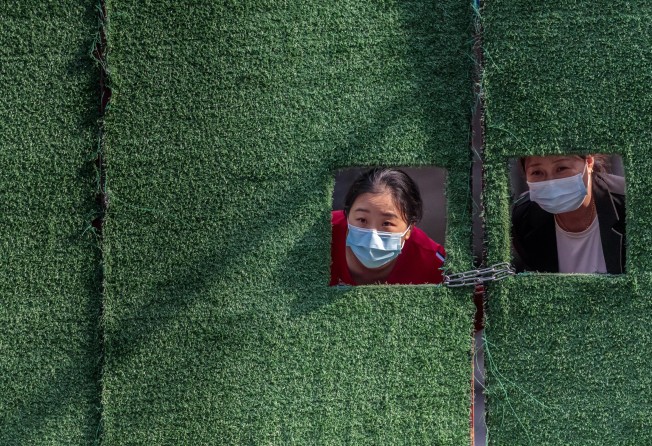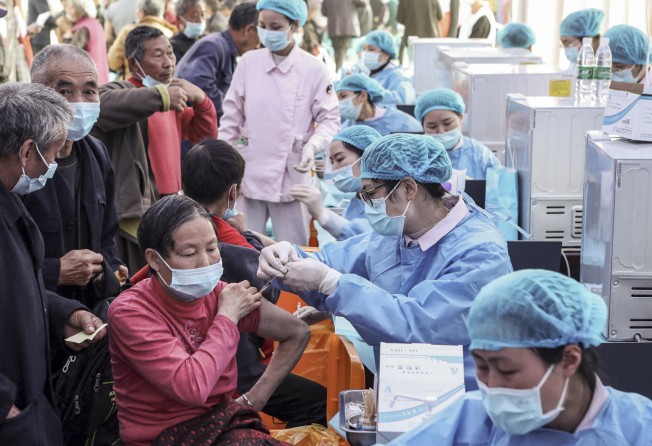Why China is reluctant to ‘live with Covid’. It’s not just politics
- China is not as medically prepared as many Western countries were before they opened up, with large numbers of elderly yet to have a third vaccine dose
- A middle-of-the-road approach, with fewer draconian lockdowns while keeping many social restrictions, could help boost the faltering economy

China is battling its worst Covid-19 outbreak since the start of the pandemic. Total case numbers have risen to 733,000 since early March, almost nine times the number in the initial wave. At the epicentre of the outbreak, infection numbers in Shanghai have remained stubbornly high despite the citywide lockdown having lasted for more than a month.
The economic costs of strictly adhering to the “zero Covid” strategy are mounting. The notable deterioration in activity data in March offered a glimpse of the growth shock, but that merely scratches the surface given that Shanghai’s lockdown started in late March. The current outbreak, combined with the Chinese government’s determination to persist with the zero-Covid policy, has turned hitting the 5.5 per cent growth target from challenging to impossible even with an aggressive stimulus package.
Despite its insistence on the zero-Covid strategy, the central government’s confidence may have waned in light of recent events. This is not because the strategy has lost effectiveness in containing the virus – the quick resolution to Shenzhen’s outbreak and the successful isolation of the rest of country from Shanghai’s debacle prove that it remains effective in cutting off transmission chains of a highly infectious disease.
The problem lies more with the sustainability of the approach, which involves balancing social and economic costs against the benefit of suppressing infections.
Given time, Shanghai’s situation will stabilise. But more worrying is what happens after the city’s lockdowns end. Given the high transmissibility of Omicron, it is very likely that it could return. And, without a policy change from the top, the city – and the nation as a whole – could experience repeated lockdowns that deepen and prolong the damage to the economy and society.
So what is holding the Chinese government back from pursuing a “living with Covid” strategy of the kind that has become mainstream globally? Apart from political considerations, China is not as prepared – from a medical standpoint – as many Western countries were before they made the policy change.
While an early mover on vaccination, only slightly more than half of China’s population has completed three shots so far. The problem is more acute among the elderly, for whom catching Covid-19 holds greater risks.
Besides low vaccination rates, China has only just started rolling out rapid antigen test kits and antiviral drugs. Medical infrastructure – measured by hospital beds per capita – could also fall sharply short of what’s required to treat severe cases if the virus were to run amok.

The authorities, therefore, face a serious dilemma. Continuing the current strategy risks plunging the economy into a deep recession, resulting in widespread job losses and social discontent. Moving to the other extreme of “living with Covid” could inflict a health care crisis, also resulting in social disruptions. Neither outcome is palatable in a year of leadership transition where social, economic and political stability is of paramount importance.
One plausible way forward is opting for a middle-of-the-road approach. This would feature fewer draconian lockdowns to ease economic pain, while keeping many social restrictions – such as compulsory mask wearing, social distancing and contact tracing – in place to control the speed of virus transmission.
In the meantime, compulsory polymerase chain reaction (PCR) testing could be gradually replaced by antigen tests, and patients with no or mild symptoms could be allowed to quarantine at home. The latter could free up medical resources for treating those with severe symptoms. But the most important preparation of all is accelerating vaccination for the elderly – a tried-and-tested way to lower the death toll.
In terms of timing, these changes should happen as soon as Shanghai’s situation is under control. Waiting another six months for the Party Congress could prove too late to save the economy.
At the same time, making hasty changes before the battle is won in Shanghai could send confusing signals to local officials, and be seen as the Chinese government admitting to the failure of its “zero Covid” policy. Such an admission could carry severe political penalties, which the government would want to avoid at all costs.
For the same reason, there is unlikely to be a high-profile announcement on abandoning the “zero Covid” approach. Instead, all the adjustments described above could be implemented – still under the “dynamic zero Covid” banner – as necessary modifications to manage a changing virus. In other words, the name won’t change, but it will be new wine in the old bottle.
For the real economy, relaxing Covid-19 restrictions will be positive for growth, but the degree will be checked by a lack of full liberalisation. If this were combined with more forceful policy support, full-year economic growth could be above 4 per cent. Without these changes, however, the outlook could grow bleaker than in 2020.
Aidan Yao is senior emerging Asia economist at AXA Investment Managers
